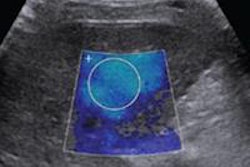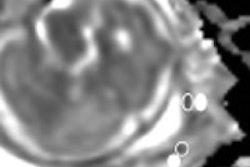Shear-wave elastography (SWE) can identify changes in cervical stiffness that indicate a higher risk of preterm labor in pregnant women, according to research published online August 13 in Ultrasound in Medicine and Biology.
In a proof-of-concept study including more than 150 pregnant women, a research team from North Carolina State University, Institut Langevin in Paris, and Paris-Descartes University found that SWE was a reliable technique for quantitatively assessing cervical stiffness. As softening of the cervix is one of the early symptoms of premature labor, doctors may ultimately be able to use the method to determine when to provide treatment to prevent preterm birth, according to the group led by Marie Muller, an assistant professor of mechanical engineering at North Carolina State.
Traditionally, cervical stiffness is assessed by manually palpating the cervix, but that's a subjective measure. To assess the utility of SWE in this application, the researchers performed SWE measurements on 157 pregnant women who were already scheduled for ultrasound scans, and then followed each patient's pregnancy.
Researchers determined that patients between 24 and 35 weeks of pregnancy who had below-average cervical stiffness had a higher risk of going into preterm labor. Specifically, women were more likely to have a preterm birth if the shear wave propagation speed was more than 1 meter per second below the baseline for their gestational age.
The researchers noted that the next step is to perform a longitudinal study that follows patients through pregnancy.
"That would give us a better understanding of how cervical stiffness changes over the course of pregnancy -- and that would help us determine which changes are likely indicative of early onset labor," Muller said in a statement.



















